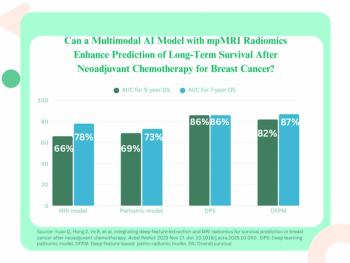
Elite Triathletes May Be at Higher Risk for Cardiac Impairment
MRI shows evidence of higher risk for elite male triathletes.
Gadolinium enhancement (LGE) cardiac MRI (CMR) has shown competitive male triathletes face a higher risk for myocardial fibrosis and possibly an early sub-clinical impairment of the LV myocardium, according to a study to be presented at
Researchers from Germany undertook this study to analyze the difference between triathletes with and without LGE. Fifty-five competitive male triathletes, aged between 34 and 54, and 30 female triathletes aged 33 to 53 underwent a CMR study, which included SSFP Cine and LGE imaging, as well as T1 mapping. The participants’ physical fitness was determined by an exercise test and the number of events, distance, and duration were self-reported by the participants.
The results showed 10 of the 55 male triathletes (18%) showed a non-ischemic myocardial fibrosis of the left ventricle (LGE+), but none was found among the women. The male triathletes in the LGE+ group completed significantly longer total distances than the male triathletes who were LGE-:
The researchers also noted that LV mass index was significantly higher in LGE+ triathletes (93±7 versus 84±11 g/m2), as were the extracellular mass index (24±3 versus 21±3 g/m2) and ECV (26.1±1.8 versus 24.4±2.2%). LGE+ triathletes had higher peak exercise systolic blood pressure compared to LGE- triathletes (215±23 versus 194±26 mmHg). Despite having comparable LVEF (63±8 versus 63 ±5%), the LGE+ triathletes showed significantly higher nt-pro-BNP values (88±151 versus 38±31 pg/ml), which had a significantly negative correlation with LVEF.
“The clinical relevance of these scars is currently unclear,” study lead author Jitka Starekova, MD, fellow in the Department for Diagnostic and Interventional Radiology and Nuclear Medicine at University Medical Center Hamburg-Eppendorf in Hamburg, said in a release. “However, they might be a foundation for future heart failure and arrhythmia.”
The comparison of the exercise test results showed that female triathletes not only had lower systolic blood pressure at peak exercise but had also achieved lower maximal power compared to male triathletes, Starekova noted. “Furthermore, comparison of the sport history showed that females had a tendency to complete shorter distances compared to male triathletes. This supports the concept that blood pressure and race distances could have an impact on formation of myocardial fibrosis.”
The researchers plan long-term follow-up studies to see if any cardiac events occur in the triathletes who had evidence of myocardial fibrosis.[[{"type":"media","view_mode":"media_crop","fid":"64520","attributes":{"alt":"","class":"media-image","id":"media_crop_3211102267639","media_crop_h":"0","media_crop_image_style":"-1","media_crop_instance":"8251","media_crop_rotate":"0","media_crop_scale_h":"0","media_crop_scale_w":"0","media_crop_w":"0","media_crop_x":"0","media_crop_y":"0","title":"Short-axis and long-axis LGE images depicting a non-ischemic fibrosis pattern in all 10 LGE+ triathletes. LGE size, indicated by arrows, varied from small, point-shaped (triathlete 53) to larger and more distinct (triathletes 5, 8 and 37) areas of fibrosis. ©RSNA 2017.","typeof":"foaf:Image"}}]]
Newsletter
Stay at the forefront of radiology with the Diagnostic Imaging newsletter, delivering the latest news, clinical insights, and imaging advancements for today’s radiologists.




























